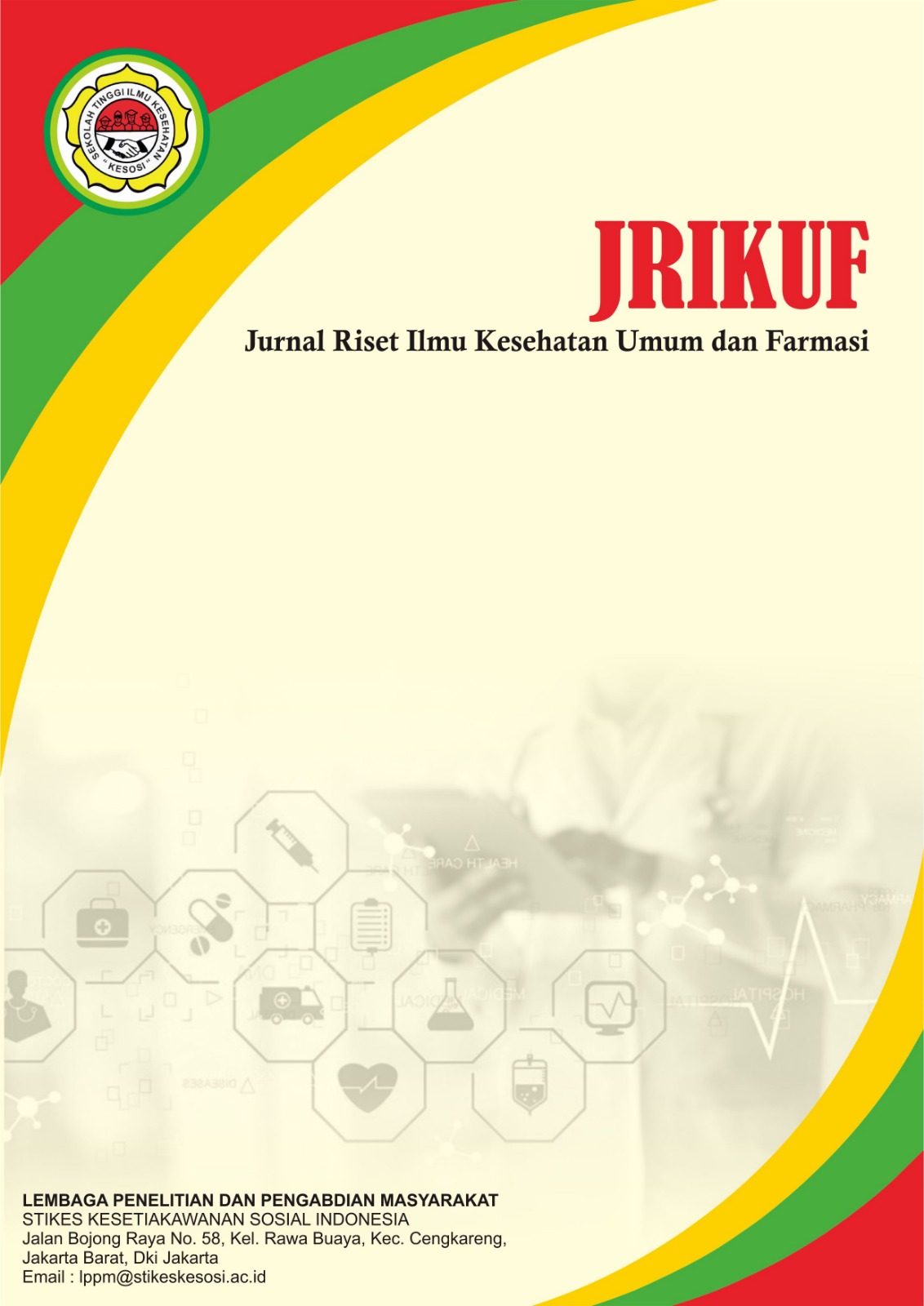Pengaruh Media Video Triase Hospital Emergency Severity Index terhadap Pengetahuan Mahasiswa Keperawatan Anestesiologi Universitas 'Aisyiyah Yogyakarta
DOI:
https://doi.org/10.57213/jrikuf.v3i3.691Keywords:
Triage, Emergency Severity Index, Video Media, KnowledgeAbstract
Triage is a crucial process in the management of emergency patients to determine the priority of treatment based on the severity of the patient's condition. One of the triage systems used is the Emergency Severity Index (ESI). This study aims to determine the effect of triage Hospital Emergency Severity Index (ESI) video media on the knowledge of anesthesiology nursing students at Universitas 'Aisyiyah Yogyakarta. This research employed a quasi-experimental design with a non-equivalent pretest-posttest control group approach. The sample consisted of 40 students divided into two groups: 20 in the intervention group and 20 in the control group. The research instruments included an educational video and a knowledge questionnaire. Data analysis was conducted using the Wilcoxon Signed Rank Test and Mann-Whitney test. The results showed a significant increase in knowledge in the intervention group after the video media was provided. The average knowledge score increased from 36.60 (pretest) to 70.05 (posttest), with the Wilcoxon test yielding a p-value of 0.001 (p < 0.05). In contrast, the control group showed no significant change with a p-value of 1.000, indicating a significant difference between the two groups. The triage Hospital Emergency Severity Index video media is effective in enhancing the knowledge of anesthesiology nursing students.
References
AlSerkal, Y., AlBlooshi, K., AlBlooshi, S., Khan, Y., Naqvi, S. A., Fincham, C., & AlMehiri, N. (2020). Triage accuracy and its association with patient factors using Emergency Severity Index: Findings from United Arab Emirates. Open Access Emergency Medicine, 12, 427–434. https://doi.org/10.2147/OAEM.S263805
Andayani. (2022, October 5). Pengaruh pendidikan kesehatan triase START (Simple Triage and Rapid Treatment) terhadap pengetahuan penanganan pre hospital pasien trauma pada anggota KSR PMI Kabupaten Jember. http://repository.unmuhjember.ac.id/10369/2/Abstraksi.pdf
Heru Suwardianto, V. W. A. (2020). Buku ajar keperawatan kritis: Pendekatan evidence base practice nursing (C. B. Lentera, Ed.; 1st ed.). Republik Indonesia.
Karokaro, T. M., Hayati, K., Sitepu, S. D. E. U., & Sitepu, A. L. (2020). Faktor-faktor yang berhubungan dengan waktu tanggap (response time) pasien di Instalasi Gawat Darurat Rumah Sakit Grandmed. Jurnal Keperawatan dan Fisioterapi (JKF), 2(2), 172–180. https://doi.org/10.35451/jkf.v2i2.356
Khairina, I., Malini, H., & Huriani, E. (2020). Pengetahuan dan keterampilan perawat dalam pengambilan keputusan klinis triase. Link, 16(1), 1–5. https://doi.org/10.31983/link.v16i1.5449
Koen, J. D., Hauck, N., & Rugg, M. D. (2019). The relationship between age, neural differentiation, and memory performance. Journal of Neuroscience, 39(1), 149–162. https://doi.org/10.1523/JNEUROSCI.1498-18.2018
Kurniasari, R. (2016). Hubungan antara level Emergency Severity Index (ESI) dengan kepuasan pasien di Instalasi Gawat Darurat Rumah Sakit Sido Waras. Jurnal Administrasi Kesehatan Indonesia, 4(2), 97–106. https://doi.org/10.20473/jaki.v4i2.2016.97-106
Martina, S. E., Satria, G., Nababan, D., & Gultom, R. (2021). Hubungan pengetahuan dengan sikap perawat tentang triage di IGD di masa pandemi COVID-19.
Saepudin, H., Rachman, F., Andiani, M. S., Saputra, D. H., Ningrum, R. K., & Hutajulu, R. A. (2023). Keberhasilan triage di gawat darurat: Evaluasi kesesuaian keputusan triage dengan kondisi pasien. Jurnal Teknologi Komputer dan Informatika, 1(2), 107–113. https://doi.org/10.59820/tekomin.v1i2.101
Sari, S. R., & Fajarini, M. (2022). The Emergency Severity Index (ESI) usage: Triage accuracy and causes of mistrage. Jurnal Aisyah: Jurnal Ilmu Kesehatan, 7(S1). https://doi.org/10.30604/jika.v7iS1.1190
Sugiyono. (2022). Metode penelitian kuantitatif, kualitatif, dan R&D. CV Alfabeta.
Susanti, D. (2023). Efektivitas pembelajaran triase berbasis simulasi terhadap kompetensi triase mahasiswa keperawatan pada Prodi D-III Keperawatan Aceh Tenggara Poltekkes Kemenkes Aceh. MAHESA: Malahayati Health Student Journal, 3(3), 872–881. https://doi.org/10.33024/mahesa.v3i3.9653
Trenholm, S., & Marmolejo-Ramos, F. (2024). When video improves learning in higher education. Education Sciences, 14(3), 311. https://doi.org/10.3390/educsci14030311
Widyawati. (2020). Buku ajar pendidikan dan promosi kesehatan untuk mahasiswa keperawatan (H. Sihotang & F. A. Rizki, Eds.; 1st ed.). Sekolah Tinggi Ilmu Kesehatan Binalita Sudama Medan.
Wolf, L. A., & Delao, A. M. (2021). Establishing research priorities for the Emergency Severity Index using a modified Delphi approach. Journal of Emergency Nursing, 47(1), 50–57. https://doi.org/10.1016/j.jen.2020.09.005
Yancey, C. C., & O’Rourke, M. C. (2023). Triase departemen darurat. StatPearls.
Zaenab Kartika Bahari, Widyaswara Suwaryo, P. A., & Setyaningsih, E. (2019). Penerapan ESI (Emergency Severity Index) terhadap response time pasien di IGD PKU Muhammadiyah Gombong. University Research Colloquium.
Downloads
Published
Issue
Section
License
Copyright (c) 2025 Jurnal Riset Ilmu Kesehatan Umum dan Farmasi (JRIKUF)

This work is licensed under a Creative Commons Attribution-ShareAlike 4.0 International License.






